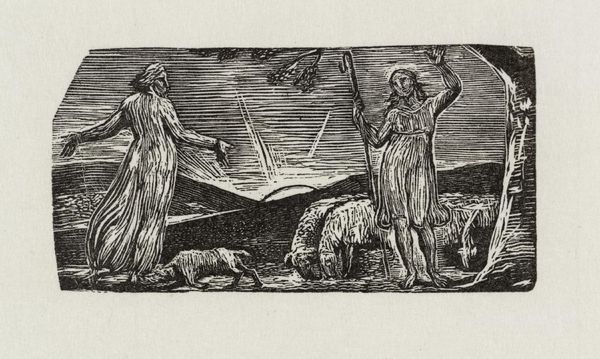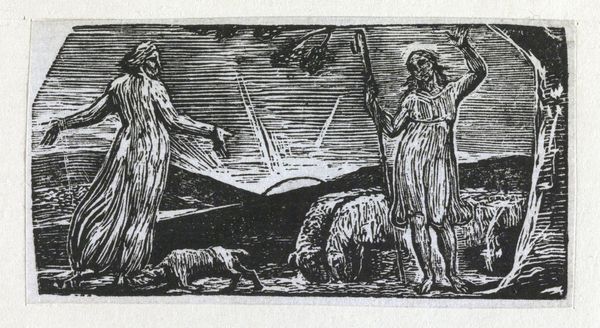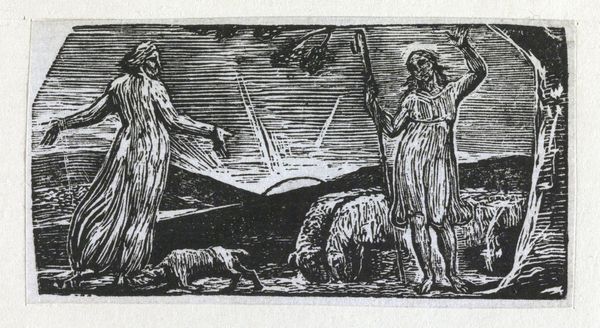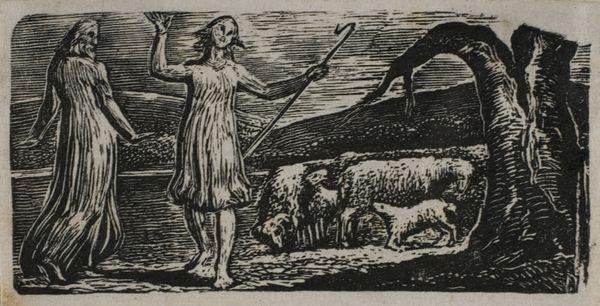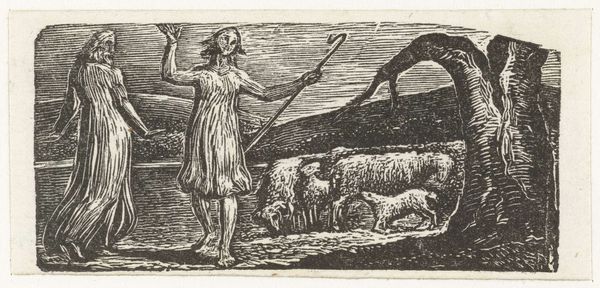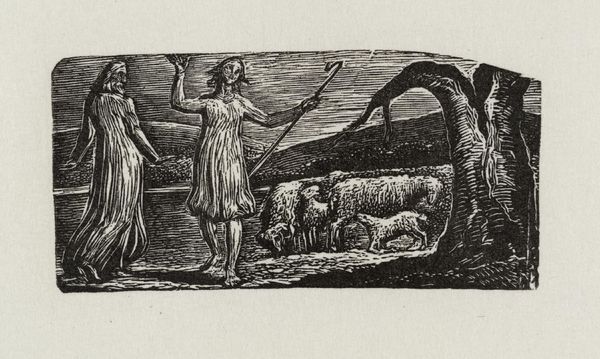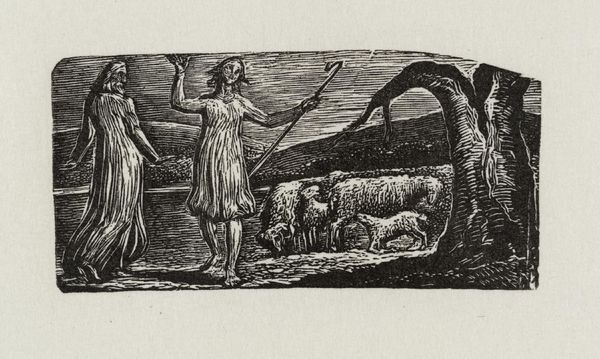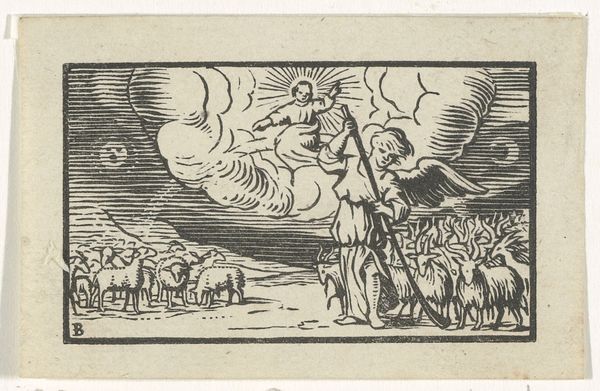
Thenot Remonstrates With Colinet, from Thornton's "Pastorals of Virgil" 1821
0:00
0:00
drawing, print, woodcut, engraving
#
drawing
#
narrative-art
# print
#
landscape
#
figuration
#
romanticism
#
woodcut
#
engraving
Dimensions: block: 1 15/16 x 3 in. (4.9 x 7.6 cm)
Copyright: Public Domain
Editor: This woodcut engraving by William Blake, "Thenot Remonstrates With Colinet, from Thornton's 'Pastorals of Virgil'," created in 1821, has such a stark and compelling quality, but its primitive texture gives it a sense of otherworldly immediacy. What historical forces were at play that might explain its look and feel? Curator: Blake’s Virgil woodcuts challenge traditional notions of illustration and accessibility. Commissioned for a schoolbook, they were ultimately deemed too radical for their intended audience, highlighting the tension between artistic vision and market demands in the early 19th century. Do you see how the intense contrast contributes to that radical nature? Editor: Absolutely, the black and white contrast feels almost aggressive. But in what other ways might these small woodcuts reflect broader cultural or political tensions of the time? Curator: Consider the Romantic era's emphasis on individual expression against the backdrop of industrialization. Blake, a vocal critic of societal norms, used these woodcuts to subvert expectations. The pastoral scenes, seemingly idyllic, are imbued with a raw, almost visionary quality, commenting on the perceived corruption of modern life. Think about how he is employing nostalgia here, but simultaneously complicating it. Editor: So, even within seemingly simple illustrations, Blake was embedding commentary on the societal changes happening around him? It's fascinating how a work dismissed as too radical could actually be a powerful cultural statement. Curator: Exactly. It shows the complex interplay between artistic intention, public reception, and the socio-political context in shaping a work’s legacy. Editor: This really demonstrates how considering the cultural moment allows for a much richer understanding of art, even in works initially seen as failures. I will remember that.
Comments
No comments
Be the first to comment and join the conversation on the ultimate creative platform.

